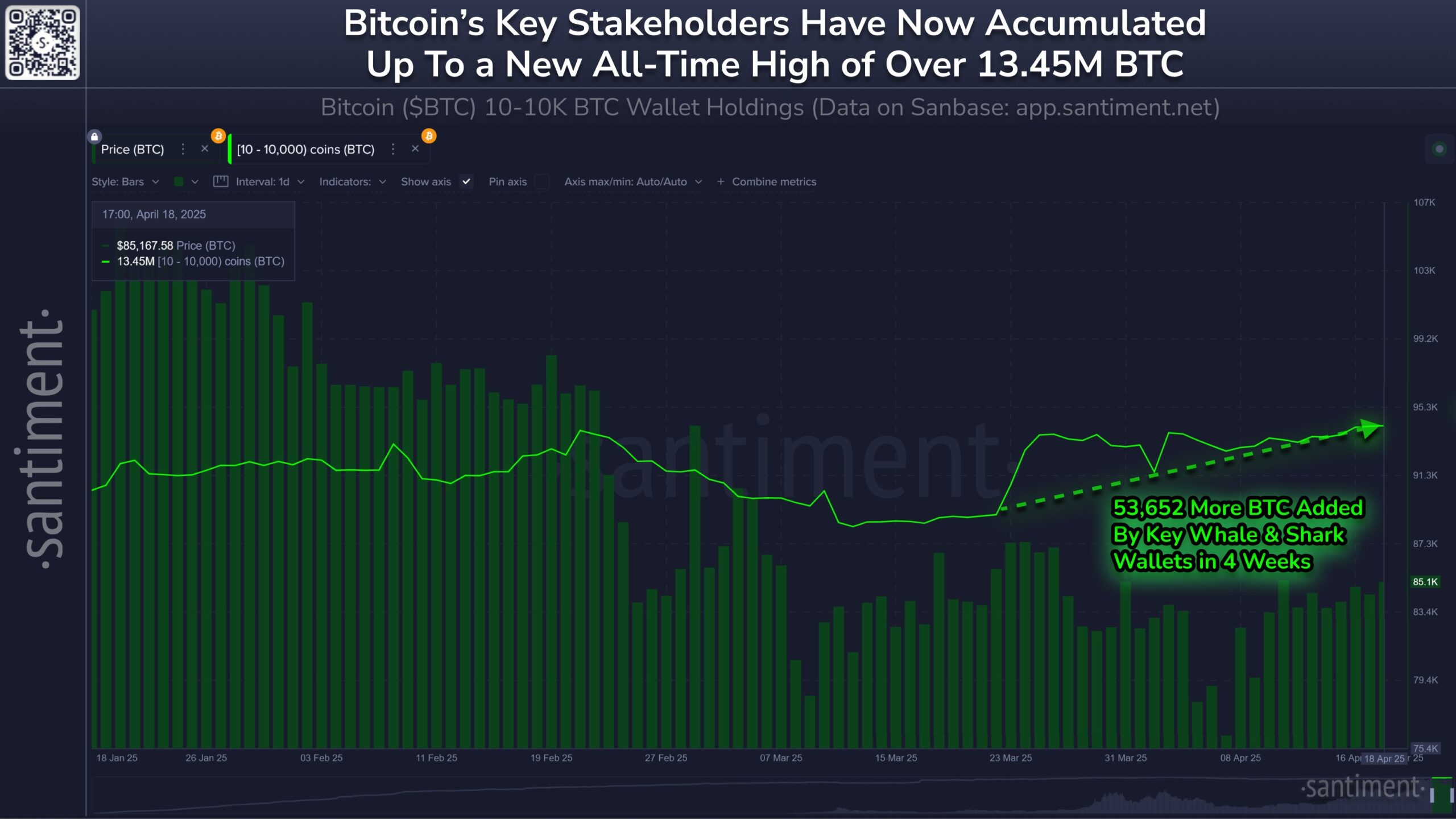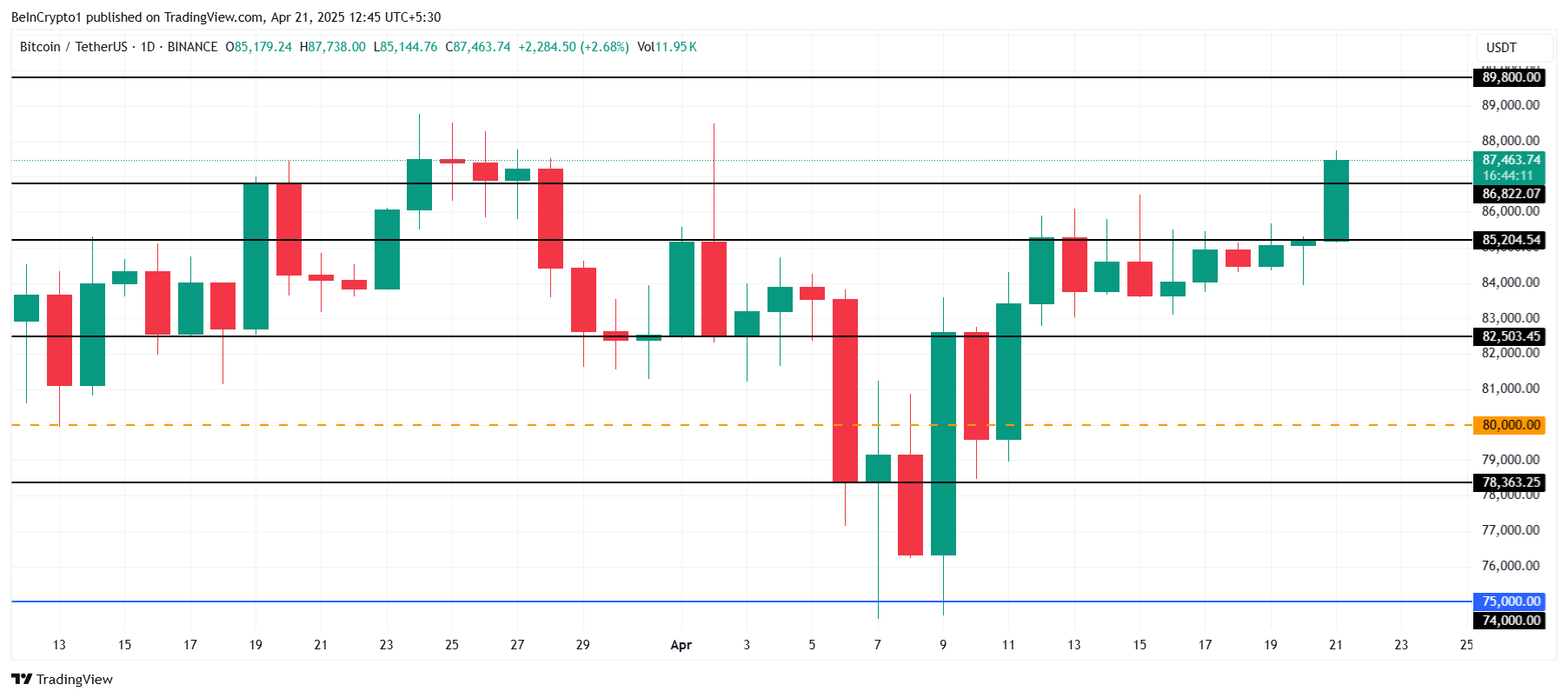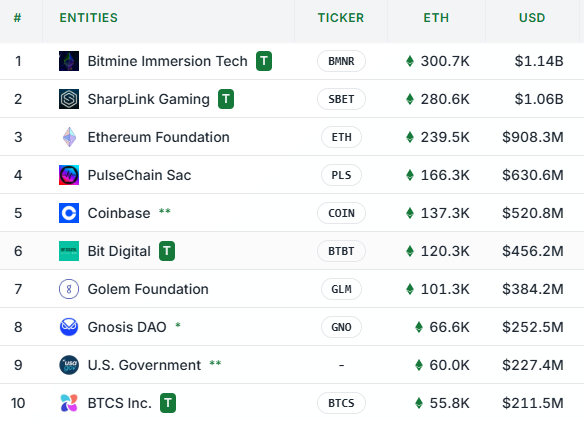Bitcoin’s price recently hit a monthly high, surpassing $87,000 and marking a notable rise for the crypto king. This rally is attributed to favorable macroeconomic conditions and the increased conviction of key investors.
Despite this growth, long-term holders’ profits have dropped to a two-year low, signaling a more cautious outlook among certain market participants.
Bitcoin Whales Remain Bullish
Whale and shark addresses, which hold between 10 and 10,000 BTC, have been actively accumulating Bitcoin at lower price levels. Over the past month, these addresses have purchased approximately 53,652 BTC, worth nearly $4.7 billion. This buying spree indicates that large investors are taking advantage of Bitcoin’s recent dip, believing in the asset’s long-term potential.
The accumulation by these large investors highlights confidence in Bitcoin’s growth. While some market participants might have been uncertain during Bitcoin’s recent price fluctuations, these major holders appear to be positioning themselves for future gains.

The MVRV Long/Short Difference indicator, which tracks the difference between short-term holders (STHs) and long-term holders (LTHs) in terms of realized profits, is currently at a two-year low. This indicates that STHs are dominating the market, which reflects the whale accumulation. However, the dominance of short-term holders in profits often signals that the market is ripe for selling, which could result in downward pressure on Bitcoin’s price.
With the MVRV indicator flipping below the zero line, there’s a risk that Bitcoin’s price could be negatively impacted if STHs decide to cash out. While whales continue to accumulate, the growing influence of STHs could lead to increased volatility, especially if the market sentiment shifts.

BTC Price Aims At $90,000
Bitcoin is currently trading at $87,463, holding above the crucial support level of $86,822. The last time Bitcoin failed to secure this support, the price fell significantly. However, if Bitcoin can maintain support at $86,822, it could move toward the next resistance level at $89,800.
Breaking through the $90,000 mark is a key milestone for Bitcoin. If Bitcoin can reclaim $90,000 as support, it will likely continue its upward trend. This psychological level is crucial for bolstering investor confidence, which would drive further price increases.

On the downside, if Bitcoin faces bearish momentum, it could struggle to hold support at $86,822. A drop through this level would likely lead to a further decline, with the next support level at $85,204. If this fails, Bitcoin could slide to $82,503, erasing a significant portion of the recent gains.
The post Bitcoin Whales Buy $4.7 Billion BTC in A Month; Price Rises To $87,400 appeared first on BeInCrypto.






